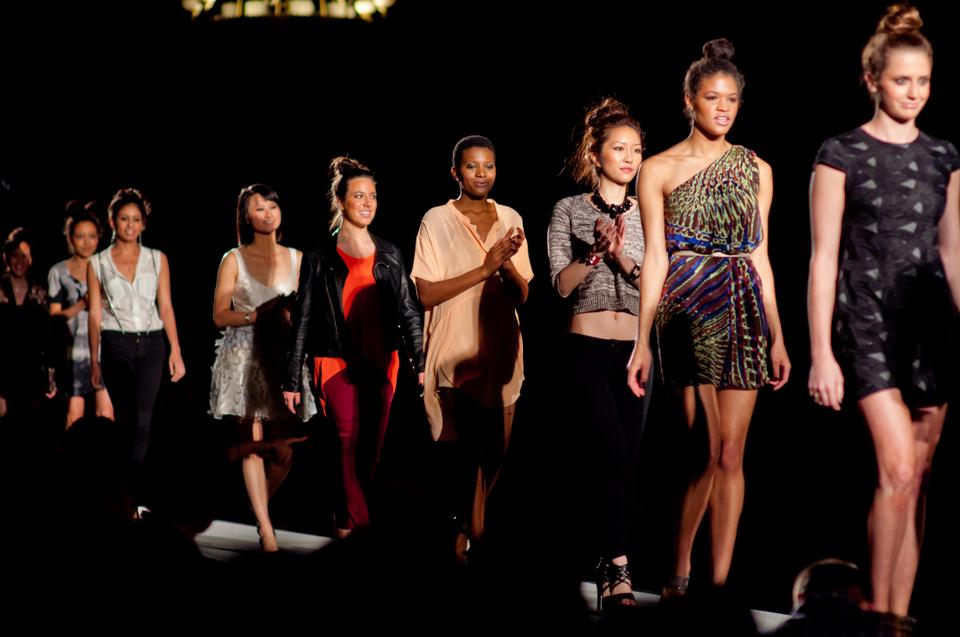
News
Summers Will Not Finish Semester of Teaching as Harvard Investigates Epstein Ties

News
Harvard College Students Report Favoring Divestment from Israel in HUA Survey

News
‘He Should Resign’: Harvard Undergrads Take Hard Line Against Summers Over Epstein Scandal

News
Harvard To Launch New Investigation Into Epstein’s Ties to Summers, Other University Affiliates

News
Harvard Students To Vote on Divestment From Israel in Inaugural HUA Election Survey
‘Identities’ Accessorizes Diverse Faces

ROVING REPORTER: On Friday evening, a series of Ivy League preps, high-heeled ladies, and neon-clad models stormed Annenberg Hall in an attempt to embody the outer personae of Harvard students in the sixth annual “Identities” fashion show. What began in 2006 as an endeavor to support the pursuits of Harvard fashion designers has metamorphosed into a large-scale production akin to a show at New York City’s annual Fashion week. This year’s show highlighted the work of Jen Kao, an increasingly well-established New York-based designer known for her trademark combinations of experimental knits and structured leather. In addition to Kao’s collection, the show provided three segments entitled “What Makes a Lady,” “An Education,” and “Double Take.”
“What Makes a Lady” featured a large array of little black dresses and pastel-colored, flowing items in an attempt to show classy femininity while bucking traditional images of sweater sets and pearls. The progressive message was undercut by an unnerving tendency for the lights to wash out models’ faces on the large projector screen. “An Education” showcased men’s fashion with a retro, Ivy League prep style. The models had to ignore two inebriated gentleman who waltzed down the catwalk. The final segment, “Double Take,” focused on the dualist nature of a woman as she moves through public and private spaces.
Sakura Huang ’13, Audience member
Roving Reporter: What do you think was the strongest aspect of the show?
Sakura Huang: Diversity. Not only of skin tone but of the styles presented in the show. Even though the prep section [“An Education”] was messed up [due to the two inebriated men dancing down the runway], the show as a whole really highlighted what I think it meant to—differences in identity.
RR: Worst aspect?
SH: To speak from a fashion perspective, it was sort of obvious that the models aren’t professional. But the women were a lot better than the men in that they had more command in their gait, poses, and staying in character.
RR: Anything they could have done better?
SH: Some of the parts seemed a bit self-congratulatory: making people queue up for an hour beforehand [to get into Annenberg]. However, this is my first fashion show, so it might just be the norm.
RR: Summary of your experience?
SH: It showcased the beautiful, the fierce, and the dangerously hot.
Lee C. Seligman ’13, Model
RR: Hardest part about being a model?
LS: I think it would actually be just stepping up onto the catwalk. But then you see your friends and it turns into this awesome experience that I just can’t describe.
Jamie Kang and Veronica Barrera, Audience members
RR: Why did you come to “Identities”?
JK: We’re from MIT—Kappa Alpha Theta—and we have a fashion show ourselves called KATwalk.
RR: Anything that you thought you’d like to emulate in your own show?
JK: The make-up was very well done—and I feel that everyone was incredibly well put-together.
VB: What Jen Kao said was true as well—about fashion not being for the weak. You really do just have to be unapologetic in the way that you live your life.
RR: What do you think is essential for a fashion show like “Identities?”
JK: They need to put an emphasis on featuring up-and-coming designers. They had Anna Sui last year, which was an amazing experience. More people like her can really make a compelling show.
—Staff writer Christine A. Hurd can be reached at churd@college.harvard.edu.
Want to keep up with breaking news? Subscribe to our email newsletter.
